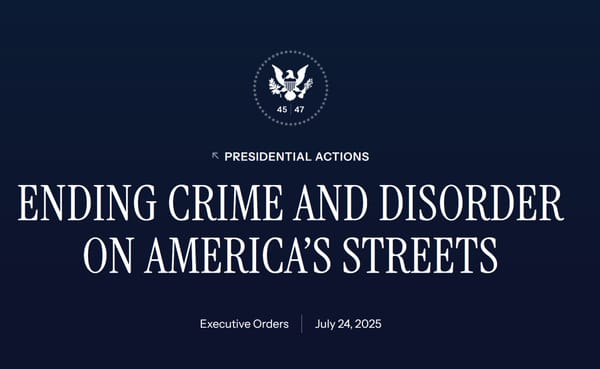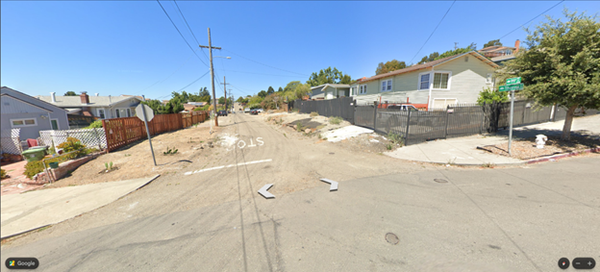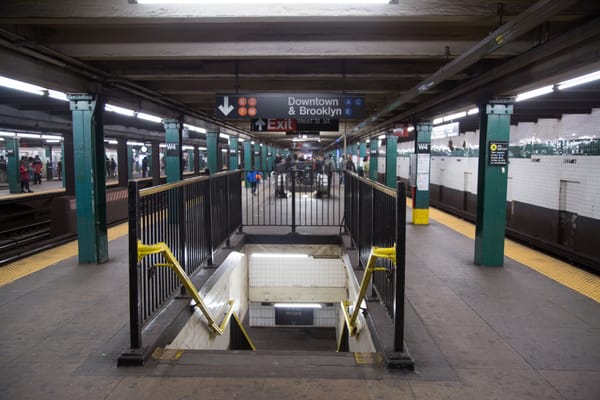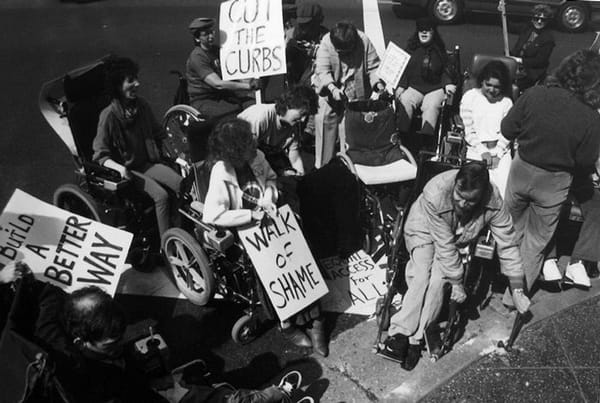6/11/25: Data on Disability and Traffic Violence? In Your Dreams…
There’s a dearth of data, and especially granular data, about disability and traffic injuries and deaths. That needs to change.
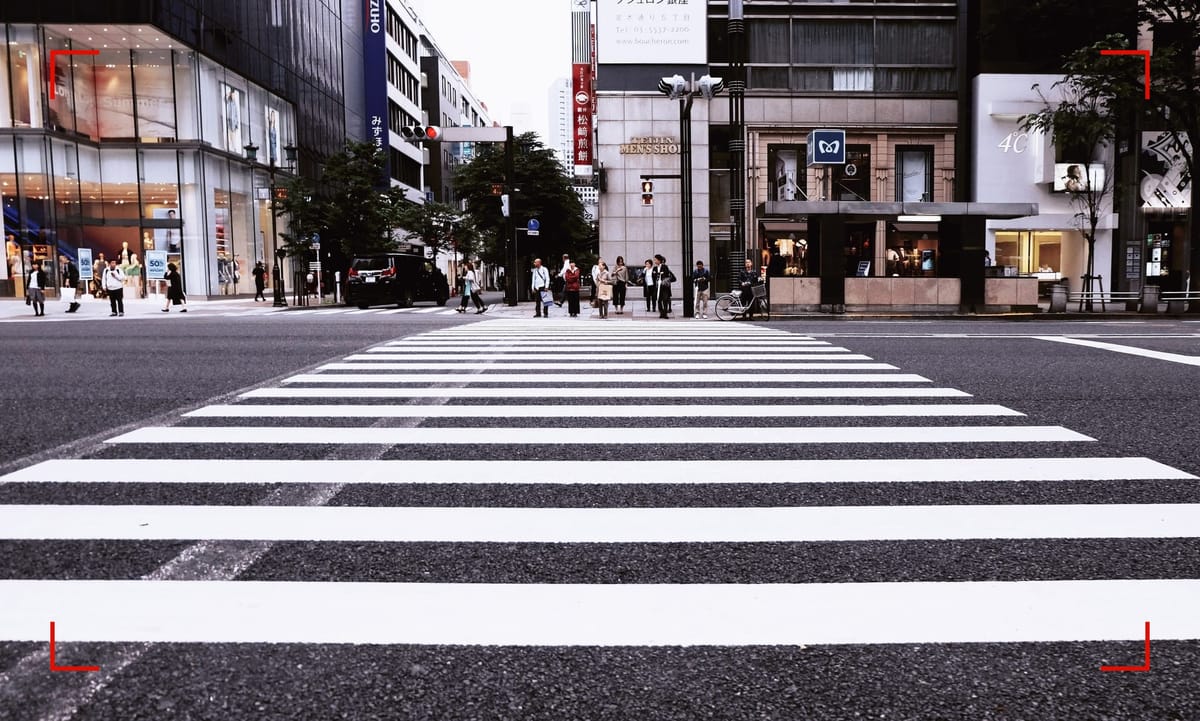
Update from last week’s call to action: SB 79 passed the Senate last Tuesday and is moving to the Assembly! This is a huge win for housing options and affordability, transit access and equity, transit agencies’ fiscal outlook, urban vibrance, and sustainability. Thanks to everyone who made a last-minute call to your state reps!
Speaking of calls to action, it’s a good time for activists to read the Know Your Rights for Disabled Protesters Guide. Stay safe out there, y'all.
And apologies for being a couple of days late. It was a busy weekend and start to the week.
Now, to the news…
FY 25-26 budget blueprint spares some disability programs
The Trump Administration just released its revised budget blueprint for the fiscal year beginning in October, and Disability Scoop reports that several disability-related programs were spared from previously explored cuts. Several months ago, a leaked HHS draft budget document “outlined plans to zero-out funding for protection and advocacy agencies, state councils on developmental disabilities, the lifespan respite program, University Centers for Excellence in Developmental Disabilities [UCEDDs] and other programs people with disabilities rely on.” The new budget blueprint saves many programs, though cuts remain:
Now, advocates say that the documents show the administration intends to retain funding for the developmental disabilities councils, the developmental disabilities programs at protection and advocacy agencies, the lifespan respite program as well as the National Institute on Disability, Independent Living, and Rehabilitation Research. Those programs will move together from the Administration for Community Living [ACL], which is being shuttered, to HHS’ Administration for Children, Families and Communities, according to the plan.
At the same time, however, the administration wants to end funding for other disability programs including University Centers for Excellence in Developmental Disabilities and a program at protection and advocacy agencies that helps ensure people with disabilities have access to voting.
While the “Big, Beautiful Bill” is getting the lion’s share of media attention, next year’s budget speaks to the Administration’s immediate priorities and its ongoing reorganization of government. For example, proposed modifications to Individuals with Disabilities Education Act funding would give states more control over how special education funds are spent, allowing some customization to meet states’ unique circumstances but reducing federal oversight. Meanwhile, the elimination of ACL challenges the idea that facilitating disabled peoples’ independence should be a major government goal; the scattering of ACL’s programs across HHS will lead to worse coordination among them and, ultimately, worse (and less) independent living. At least we can breathe a sigh of relief that cuts explored earlier were clawed back, largely thanks to the tireless work of advocates.
Mud City crosswalks and missing disability data
In good news from litigation-land, a federal court has ordered Chicago to install more than 2000 accessible pedestrian signals (APS) for blind pedestrians over the next decade. A press release by Disability Rights Advocates (DRA) – one of two firms that filed the class-action suit on behalf of the American Council of the Blind of Metropolitan Chicago and three individuals – explains that “at the time of filing [in September 2019], less than one half of one percent of Chicago’s 2,800+ signalized intersections provided APS for blind pedestrians.” The order will require that 71% of signalized intersections have APS by 2035, and the remainder have APS installed by 2040 “unless [Chicago] can show that blind pedestrians already have meaningful access to the pedestrian grid.”
Among assorted requirements in of the order is one “to prioritize APS installation at the most dangerous intersections.” Now, advocates understand that PWDs are at higher risk of traffic violence than able-bodied folks are. Blind people may miss the timing of crosswalk signals without an APS; when they’re crossing the street, they can’t see errant cars or distracted drivers so they could move out of the way of danger. Wheelchair users, little people, and other folks below average height are harder to see over the hoods of trucks, SUVs, and many cars – and when hit tend to get knocked down to the street, which carries more risk than rolling onto a car’s hood. Deaf folks can’t hear honking horns, nearby engines, or sirens that would warn of an oncoming vehicle. But while all of this is intuitive, we lack hard data on traffic violence and disability. Claudia Folska, who is blind, wrote last year that:
No public agency at any level of government specifically tracks traffic fatalities and injuries involving disabled pedestrians. Police aren’t even required to note a disability on the accident report. That’s potentially both dangerous and costly, since roadway engineers and urban planners are basically taking educated guesses about where to spend money on safety improvements and which ones to employ.
…
When it comes to traffic fatalities, not only are we typically not asked for our input, we’re not even our own category. We’re lumped in with “vulnerable road users,” which includes kids, older adults and cyclists. But our needs are different and specific, and we need our own data to have a chance at getting them met.
Even more shocking, people who use wheelchairs aren’t considered pedestrians at all. Instead, wheelchairs fall into the same category of personal conveyances as bicycles and scooters. [Alex’s note: “pedestrian” technically means “a person who walks,” but for traffic data’s sake, it would be far better to put wheelchair users in the pedestrian category than the cyclist one].
There’s clearly a dearth of data, and especially granular data, around disability and traffic injuries and deaths. In fact, there has only been one study looking at disability and traffic violence in the US, and it only focused on one disability group (wheelchair users killed by cars) and one six-year period (2006-2012). Using a combination of Fatality Analysis Reporting System data and a LexisNexus news search – which the authors admit undercounted fatalities, but were all that was available – the study found that:
[F]rom 2006 to 2012, the mortality rate for pedestrians using wheelchairs was 2.07/100 000 person-years (95% CI 1.60 to 2.54), which was 36% higher than the overall population pedestrian mortality rate (p=0.02). Men's risk was over fivefold higher than women's risk (p<0.001). Compared to the overall population, persons aged 50–64 using wheelchairs had a 38% increased risk (p=0.04), and men who use wheelchairs aged 50–64 had a 75% increased risk over men of the same age in the overall population (p=0.006). Almost half (47.6%; 95% CI 42.8 to 52.5) of fatal crashes occurred in intersections and 38.7% (95% CI 32.0 to 45.0) of intersection crashes occurred at locations without traffic control devices. Among intersection crashes, 47.5% (95% CI 40.6 to 54.5) involved wheelchair users in a crosswalk; no crosswalk was available for 18.3% (95% CI 13.5 to 24.4). Driver failure to yield right-of-way was noted in 21.4% (95% CI 17.7 to 25.7) of crashes, and no crash avoidance manoeuvers were detected in 76.4% (95% CI 71.0 to 81.2).
Those are damning numbers, and drivers’ failure to avoid crashes speaks to the threat of cars, car bloat, and ever-more-distracted drivers. But these are the only data we’ve got for now and are not enough to inform targeted improvements; more data, though, would empower stakeholders to improve policies, infrastructure, and more. Folska recommends that the US Department of Transportation’s Fatality Analysis Reporting System “create a category for disabled pedestrians, and then break it down by specific disabilities.” She recommends granular data including “time of day, weather conditions, type of disability, whether those injured or killed used a walker, wheelchair or other mobility aid, and circumstance of collision.” These may be big asks in 2025, but we should demand improved data regardless of who’s in charge. If the US Department of Transportation won’t compile that data, states’ transportation departments could pick up some slack. They don’t have the data-collecting capacity of the feds, but they can collect some data regardless – and each bit can help us reduce deaths and injuries to disabled pedestrians.
WHO Disability Health Equity Initiative
At the international level, the World Health Organization launched their Disability Health Equity Initiative, which “aims to close the avoidable health gaps between persons with disabilities and the broader population,” on June 10. Many factors – from unequal healthcare access to income inequality to the very nature of the built environment – contribute to “avoidable health gaps,” so tackling those gaps will be a Herculean and society-wide effort. The Disability Health Equity Initiative plans to do its part through four strategic areas: building leadership on health equity among persons with disabilities; elevating health equity for persons with disabilities as a political priority in health; creating a disability inclusive health sector; and establishing robust indicators, evidence and monitoring.
The “creating a disability inclusive health sector” strategic area may be most difficult simply because it relies on each nation to take myriad actions around national health plans, healthcare infrastructure, financing, and workforce awareness and training, among other things. Suffice to say it’s a good thing that the health equity plan starts with building disability leadership. Achieving resilient disability equity of any kind – whether transportation equity, housing equity, or health equity – requires informed, empowered disability leaders working to build better systems and keep them from being dismantled. Well-trained leaders will be especially valuable in developing countries, countries with a deep culture of ableism, and countries backsliding on disability health equity goals (including those with related political headwinds). And to any interested advocates or organizations out there: applications for membership in the DHEI stakeholders network will open in August. Stay tuned…
In other news…
Budget bill slims future funding for nursing homes, disability services waivers – MPR News
Senators Ask Housing Finance Agency to Pause Plans to Privatize Fannie, Freddie – Bloomberg
Being in nature can help people with chronic back pain manage their condition – Science Daily (University of Plymouth press release)
Uber is trying to help older Americans' transportation troubles. Will it work? – USA Today
Lawmakers pass legislation to fix housing crisis, but town leaders across the state disagree – WFSB (Hartford-New Haven, Connecticut)
Trump's “Able Bodied” Public Housing Limits Could Displace Over 300,000 New Yorkers – Planetizen
SSA sets 15-day deadline for new disability appeal form; What you need to know to keep your benefits – Explícame/MSN
New England State Frees Up 450 Acres of Land To Build New Affordable Housing for Residents: 'We Are Already Getting Shovels in the Ground' – SF Gate
Proposed HUD budget cuts would impact local homeless efforts – KCRG (Cedar Rapids/Eastern Iowa)
How the little-known ‘dark roof’ lobby may be making US cities hotter – The Guardian
Inside Trump’s purge of federal heat experts – E&E News/ClimateWire
Climate change a growing problem for power network – BBC
New LAX/Metro Transit Center opening to connect riders directly to airport terminals – CBS News
Telehealth can improve care for cats with chronic health issues – Science Daily (UC Davis Press Release)
New Jersey sends kids with disabilities to separate schools more than any other state – The Hechinger Report
Plan to overhaul MO schools for severely disabled faces tough questions by state board – Springfield News-Leader

